Step into the realm of culinary adventure with these 15 unusual edible plants for your garden. If you’re looking to add a dash of novelty and expand your palate, these extraordinary plants are sure to delight both your taste buds and your gardening endeavors.
From vibrant and exotic fruits to uncommon herbs and vegetables, this diverse selection will introduce a world of flavors and textures to your homegrown meals. Get ready for a journey of discovery as we explore these unique edible plants that will not only add a touch of intrigue to your garden but also elevate your culinary creations to new heights.
#1. Rat’s Tail Radishes
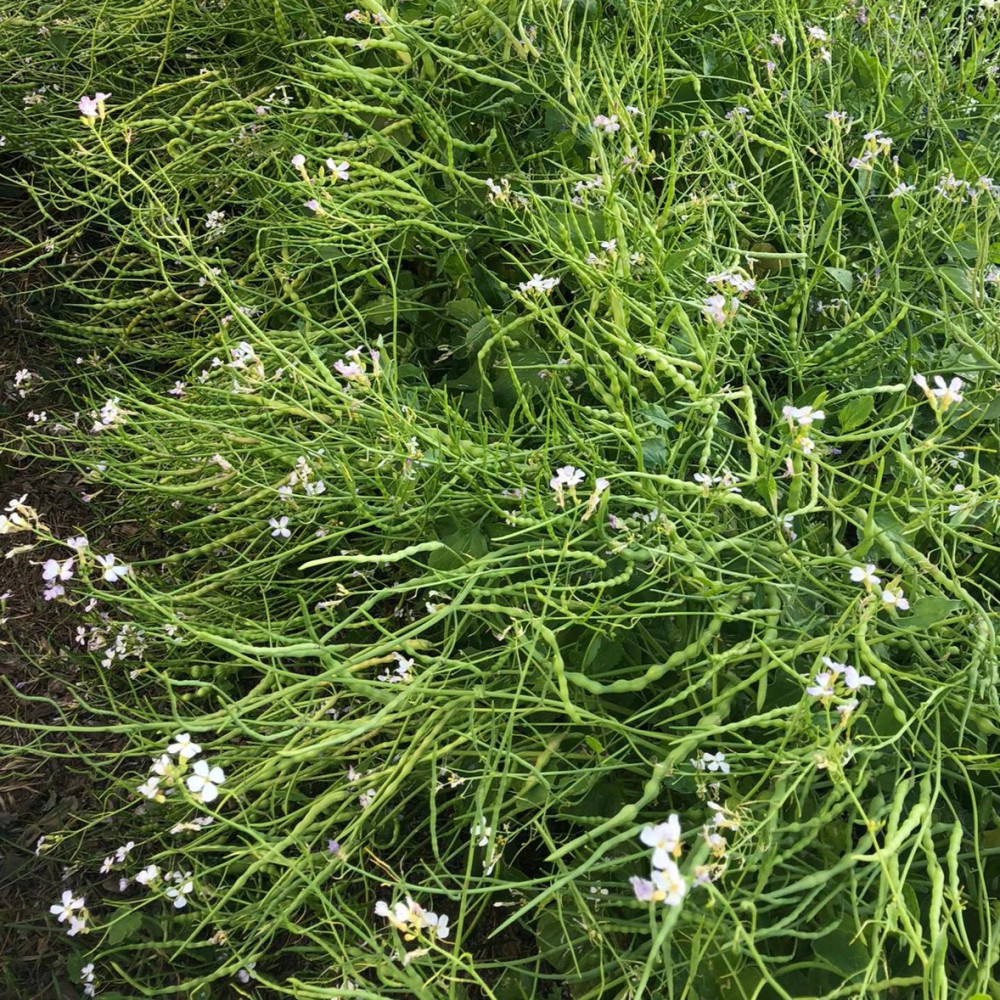 Source: Truelove Seeds
Source: Truelove Seeds
One of the advantages of rat’s tail radishes is their ability to thrive in various climates and soil conditions. They are generally easy to grow and require minimal maintenance. The plants produce attractive pink or white flowers before developing the seed pods, adding beauty to your garden.
These unique radishes are not only a tasty addition to your meals but also a great conversation starter among gardening enthusiasts. So, if you’re looking to diversify your garden and try something different, consider adding rat’s tail radishes to your list of edible plants.
#2. Big Max Pumpkins
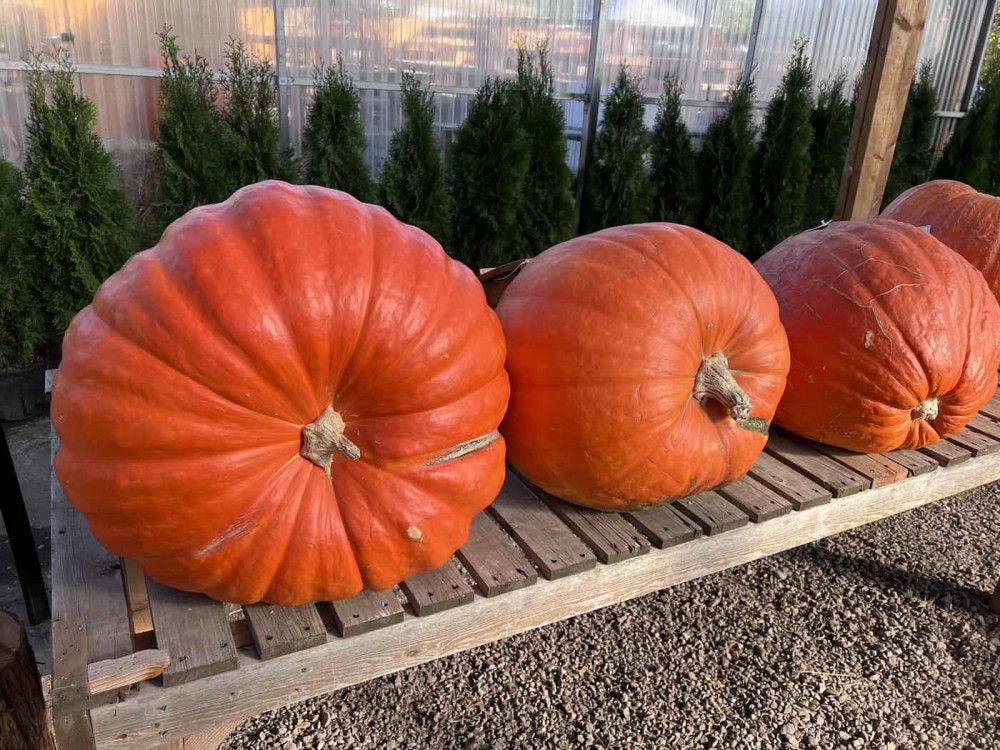 Source: Home For The Harvest
Source: Home For The Harvest
While Big Max pumpkins are edible, their flavor and texture are not as desirable as those of smaller pumpkin varieties. They tend to have a watery and less sweet flesh, making them less suitable for culinary uses such as pies or soups. However, their large size makes them ideal for carving and creating eye-catching jack-o’-lanterns.
To cultivate Big Max pumpkins, it is recommended to provide them with ample space and full sun in well-drained soil. Regular watering and fertilizer application are essential for their optimal growth. The plants require a long growing season, usually taking around 120 days from seed to harvest.
#3. Armenian Cucumbers
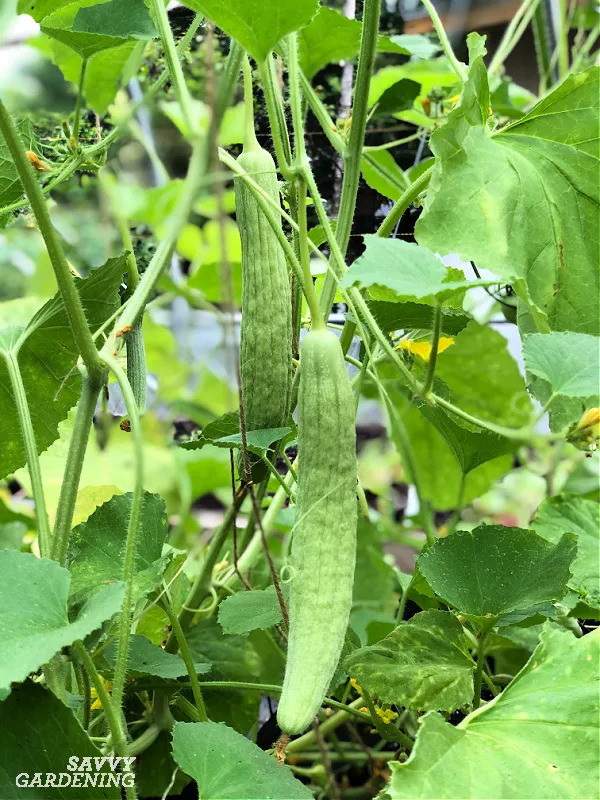 Source: Savvy Gardening
Source: Savvy Gardening
One of the advantages of Armenian cucumbers is that they are heat-tolerant and can thrive in hot climates. They are typically grown as vining plants, requiring support such as trellises or fences to allow the fruits to grow straight.
These cucumbers are versatile in the kitchen and can be enjoyed raw in salads, sliced for sandwiches, or pickled. They add a refreshing crunch and subtle flavor to various dishes.
#4. Goji Berries
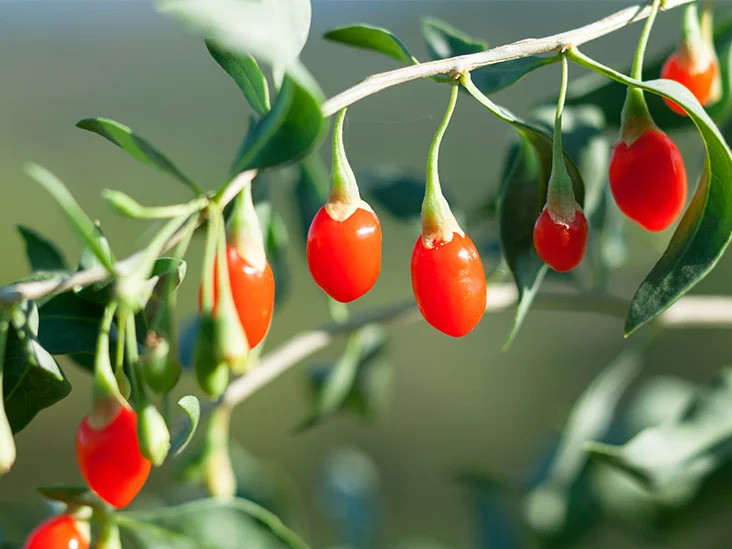 Source: Healthline
Source: Healthline
When cultivating goji berries, they thrive in well-drained soil and require a sunny location. They are relatively low-maintenance plants and can be grown in containers or directly in the ground.
In addition to their nutritional content, goji berries are believed to possess various health benefits. They are often associated with boosting immune function, promoting healthy skin, improving eye health, and supporting overall well-being. Some studies have also suggested that goji berries may have anti-aging and anti-inflammatory properties.
#5. Pineberries
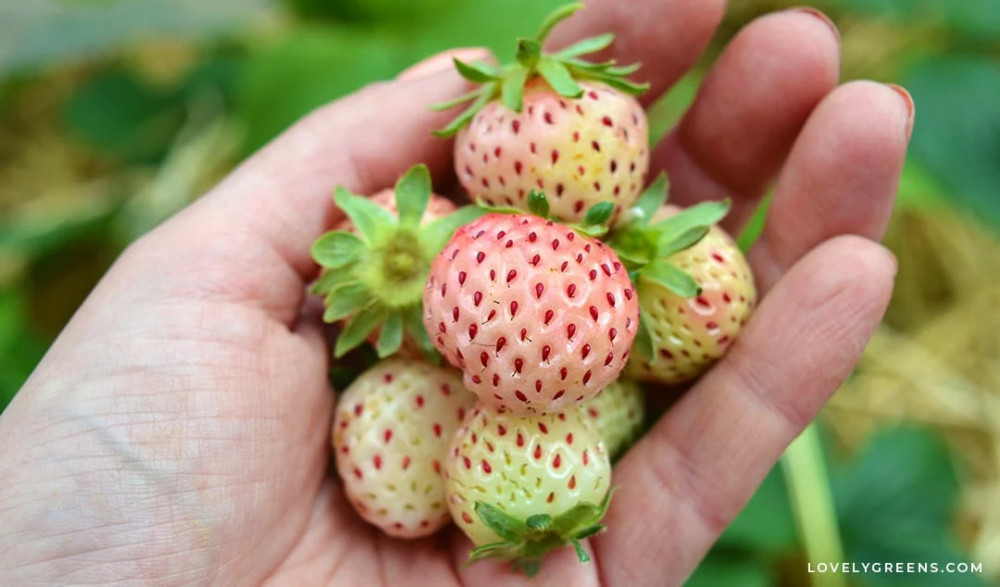 Source: Lovely Greens
Source: Lovely Greens
Cultivating pineberries can be a rewarding experience for gardeners. They require similar growing conditions as regular strawberries, preferring full sun and well-drained soil. They are also known for their high antioxidant content and are a good source of vitamin C and fiber.
Pineberries are a result of crossbreeding different strawberry varieties. They are generally smaller than conventional strawberries and have a pale yellow or white color with red seeds. Their appearance and flavor make them an intriguing addition to fruit salads, desserts, and even cocktails.
#6. Cosmic Purple Carrots
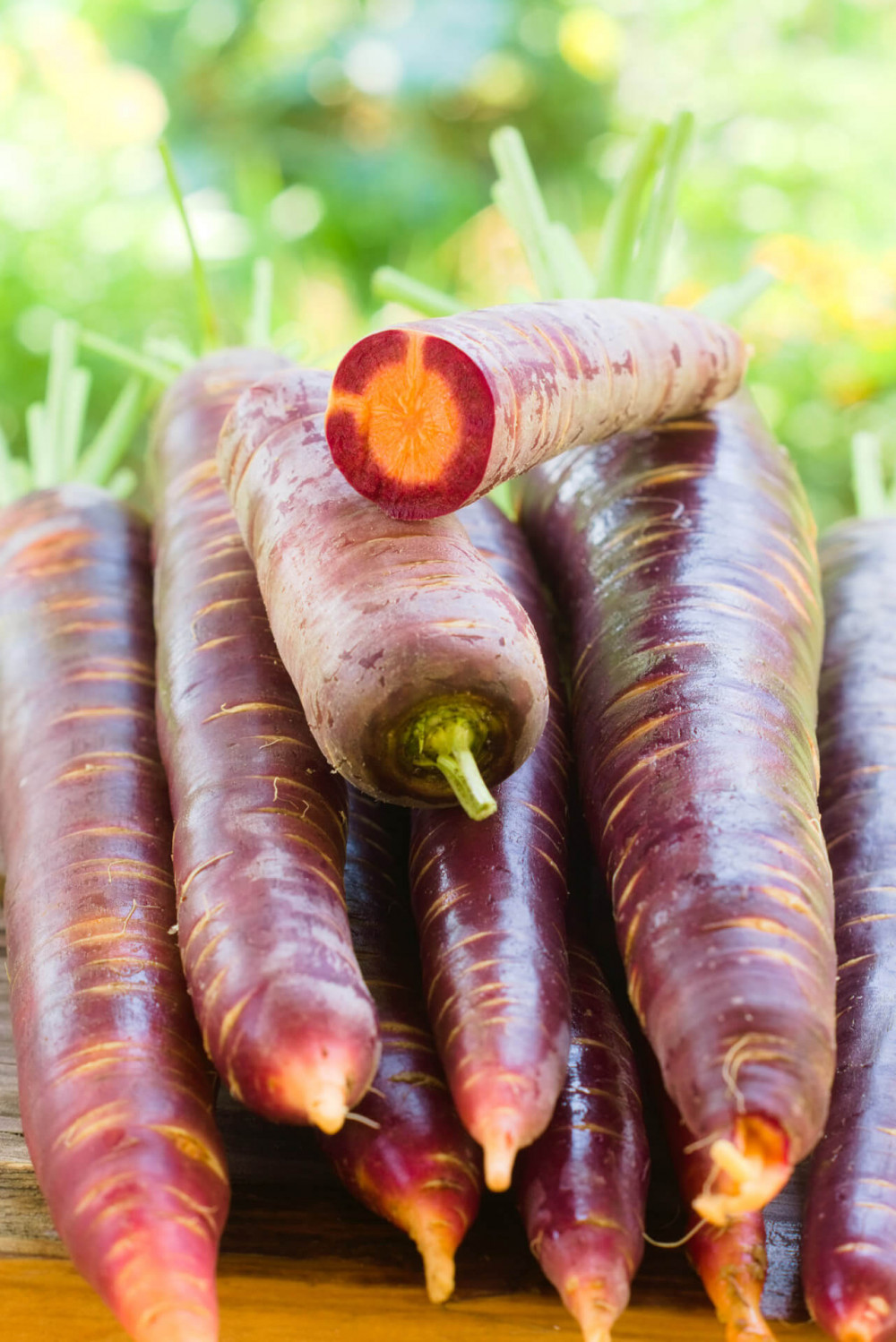 Source: Farmhouse Seeds
Source: Farmhouse Seeds
Growing cosmic purple carrots is similar to cultivating other carrot varieties. They thrive in well-draining soil and require regular watering to ensure proper growth. Harvesting is typically done when the carrots reach their desired size, usually around 60-70 days after sowing.
With their striking appearance and delicious flavor, cosmic purple carrots are not only a feast for the eyes but also a nutritious addition to your garden and kitchen. Try incorporating these vibrant root vegetables into your meals to enjoy their unique taste and add a pop of color to your culinary creations.
#7. Persimmons
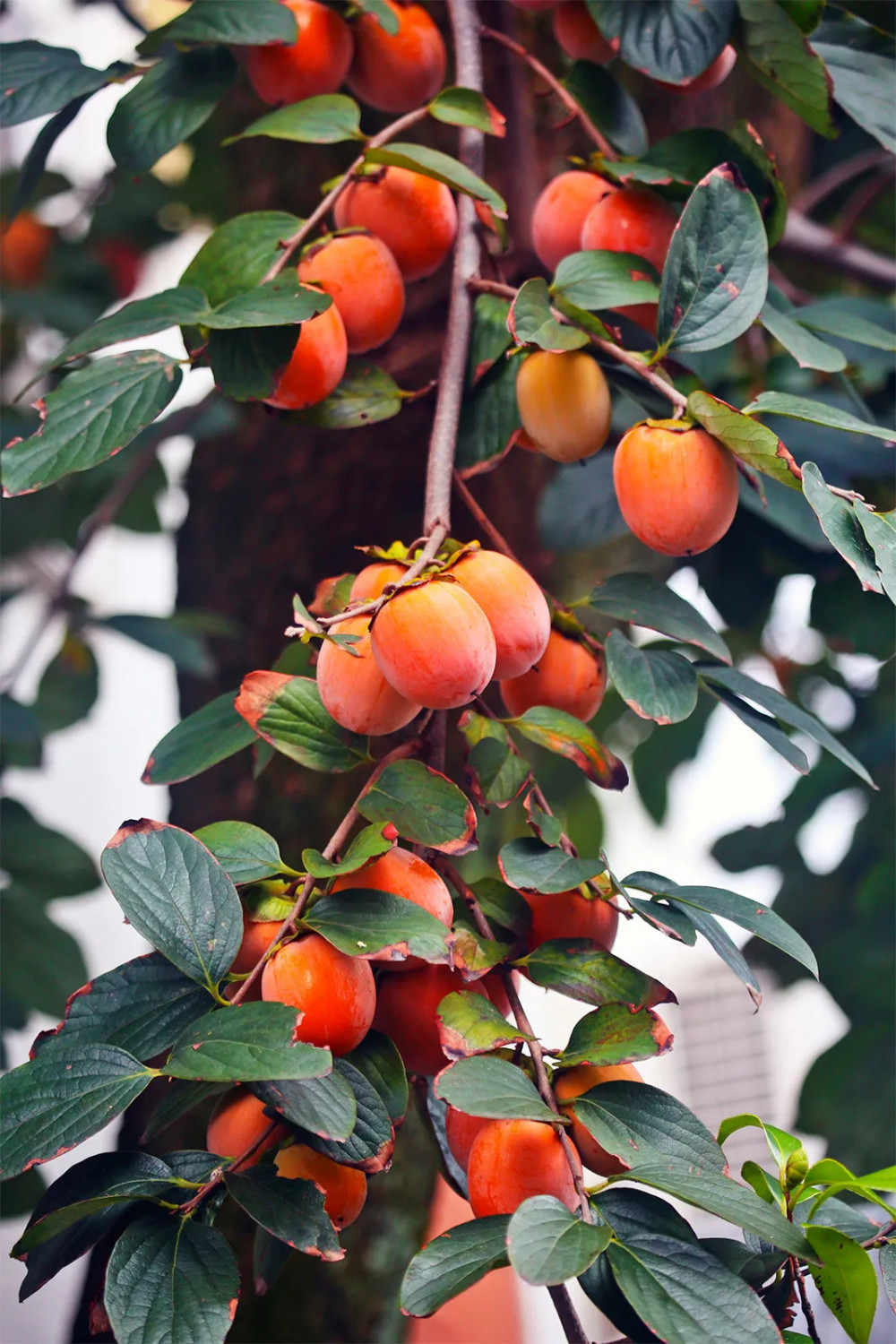 Source: Britannica
Source: Britannica
Hachiya persimmons, on the other hand, are elongated and acorn-shaped. They are incredibly astringent when unripe and must be fully ripe and soft before eating. Hachiyas have a rich, sweet flavor and a custard-like texture when fully ripened. They are commonly used in baking, such as in puddings, cakes, and cookies.
Persimmons are not only delicious but also offer several health benefits. They are a good source of vitamins A and C, dietary fiber, and antioxidants. Additionally, persimmons contain compounds that have been associated with anti-inflammatory and anti-cancer properties.
#8. Painted Hill Corn
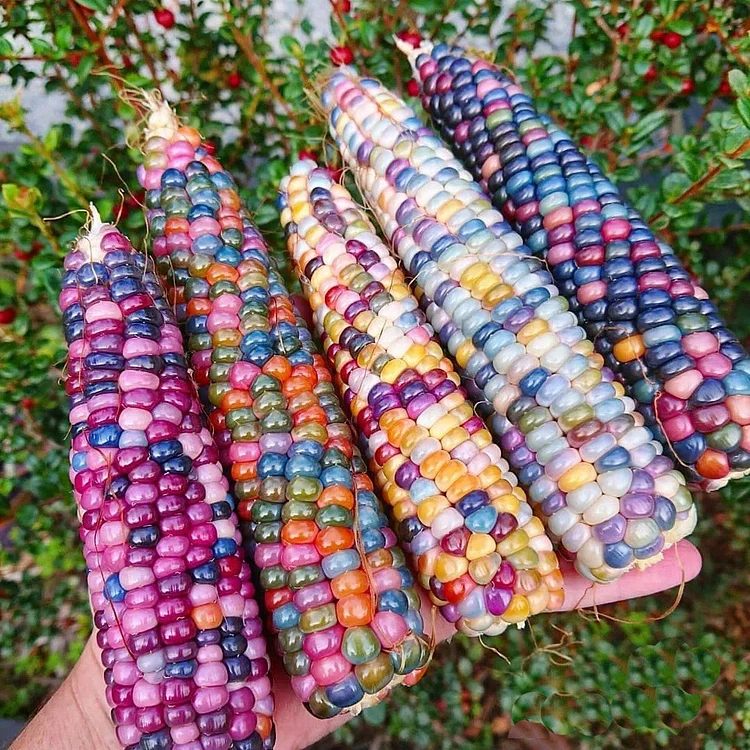 Source: Gardenerstars Seeds and Plant
Source: Gardenerstars Seeds and Plant
Painted Hill Corn, also known as Glass Gem Corn, is a unique and visually stunning variety of corn. What sets it apart is its remarkable array of vibrant and translucent kernels that resemble stained glass. Each ear of corn displays a mesmerizing range of colors, including blues, purples, pinks, and yellows, creating a truly breathtaking sight.
This heirloom corn variety was developed by Carl Barnes, a Native American farmer, and breeder from Oklahoma. He spent years selectively cross-pollinating traditional corn varieties to achieve the stunning diversity of colors found in Painted Hill Corn.
#9. Cucamelons
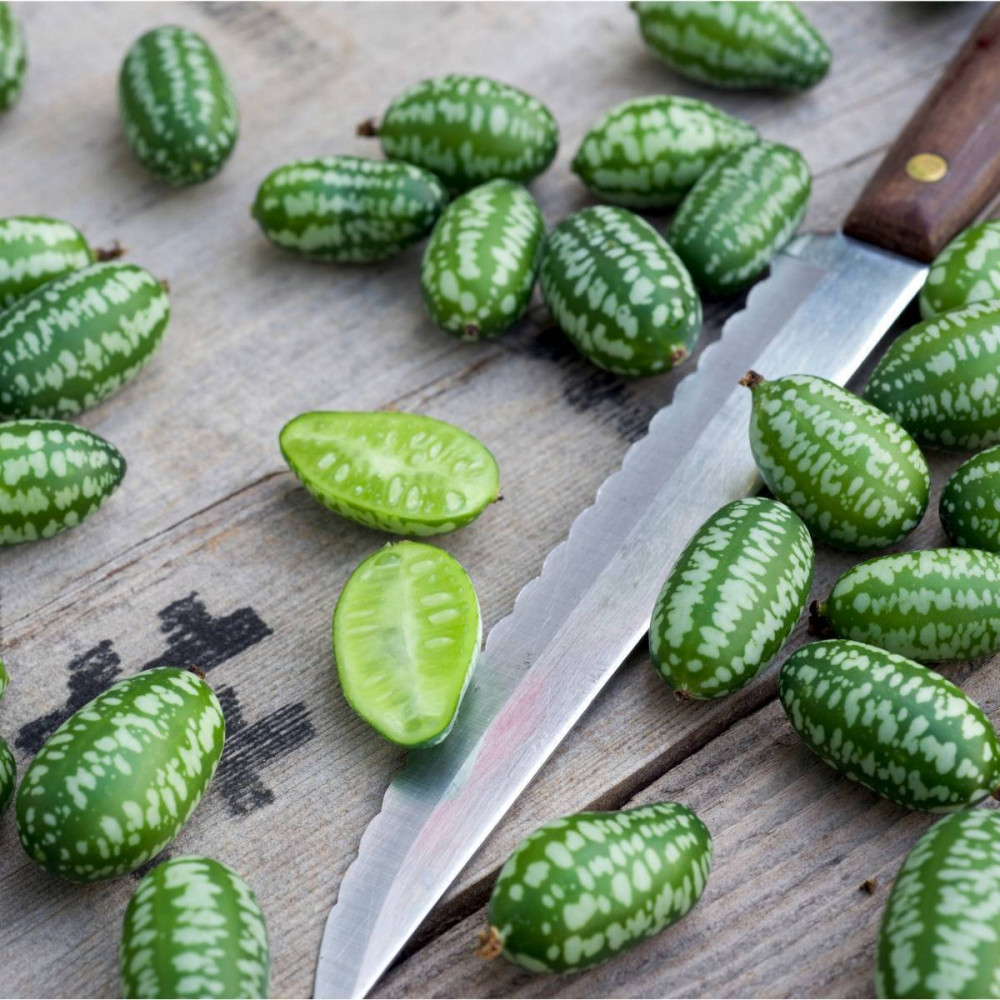 Source: The Seed Collection
Source: The Seed Collection
Cucamelon plants are easy to grow, and they thrive in warm climates. They produce an abundance of small fruits, usually about the size of a grape or a cherry tomato. The plants are vigorous climbers and can be trained on trellises or allowed to spread on the ground. They are also relatively disease-resistant and require minimal maintenance.
Native to Mexico and Central America, Cucamelons have gained popularity in recent years for their refreshing taste and unique texture. They have a crunchy outer skin that resembles a cucumber, while the interior offers a burst of tangy, citrus-like flavor. Their flavor profile is often described as a combination of cucumber and lime, making them a popular addition to salads, salsas, and pickling recipes.
#10. Chioggia Beets
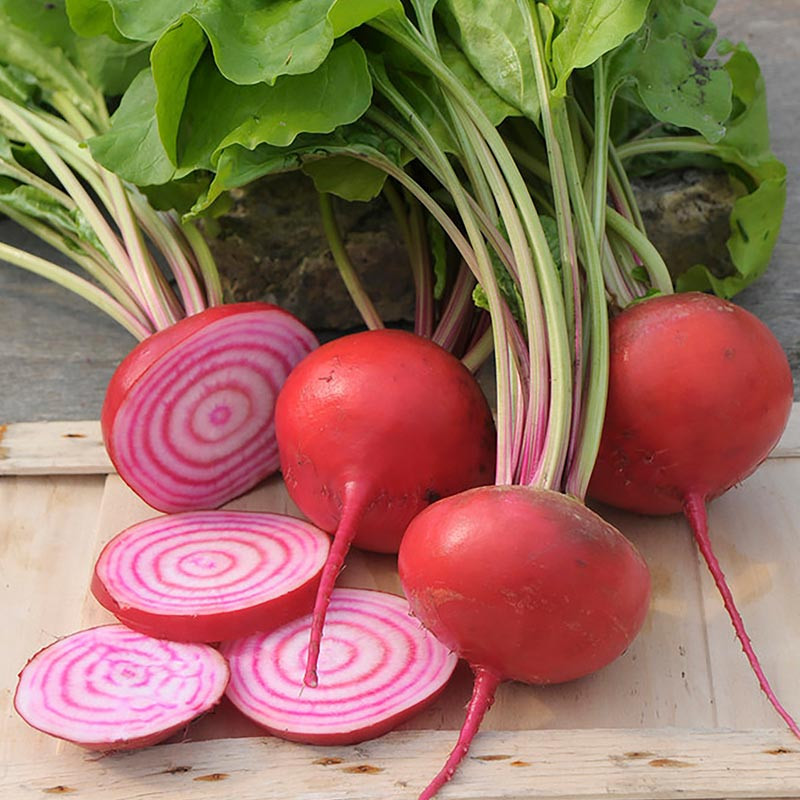 Source: De Bolster Organic Seeds
Source: De Bolster Organic Seeds
In terms of taste, Chioggia beets offer a mild and slightly sweet flavor, making them versatile in various culinary preparations. They can be enjoyed raw in salads, pickled for a tangy kick, or cooked in a variety of dishes such as roasted vegetables, soups, and even desserts.
Aside from their visual appeal and taste, Chioggia beets also provide nutritional benefits. They are a good source of fiber, folate, potassium, and antioxidants, contributing to a well-rounded and healthy diet.
#11. Ground Cherries
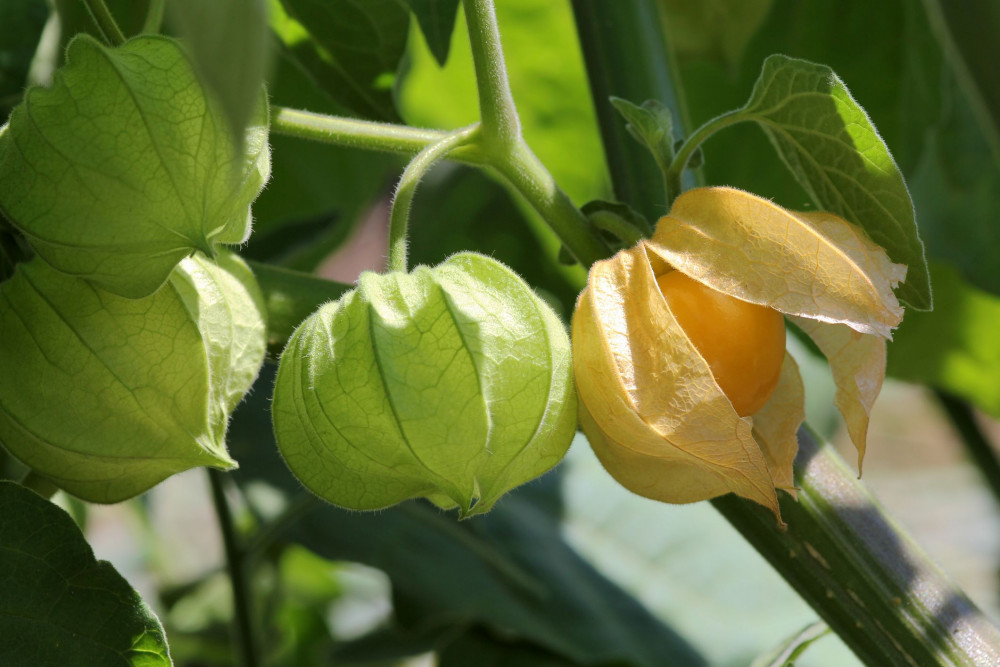 Source: Good Housekeeping
Source: Good Housekeeping
These fruits are typically harvested when the husks turn brown and fall to the ground, hence the name “ground cherries.” Inside the husks, you’ll find small, yellowish-orange fruits that resemble miniature tomatoes. Ground cherries can be enjoyed fresh, and their flavor is often described as a mix of tropical fruit, pineapple, and citrus with a hint of tomato.
These plants are relatively easy to grow, and they thrive in sunny locations with well-drained soil. They are typically grown as annuals, reaching a height of about 2-3 feet. Ground cherries are known for their prolific fruiting, and they can produce a bountiful harvest throughout the summer months.
#12. Hardy Kiwis
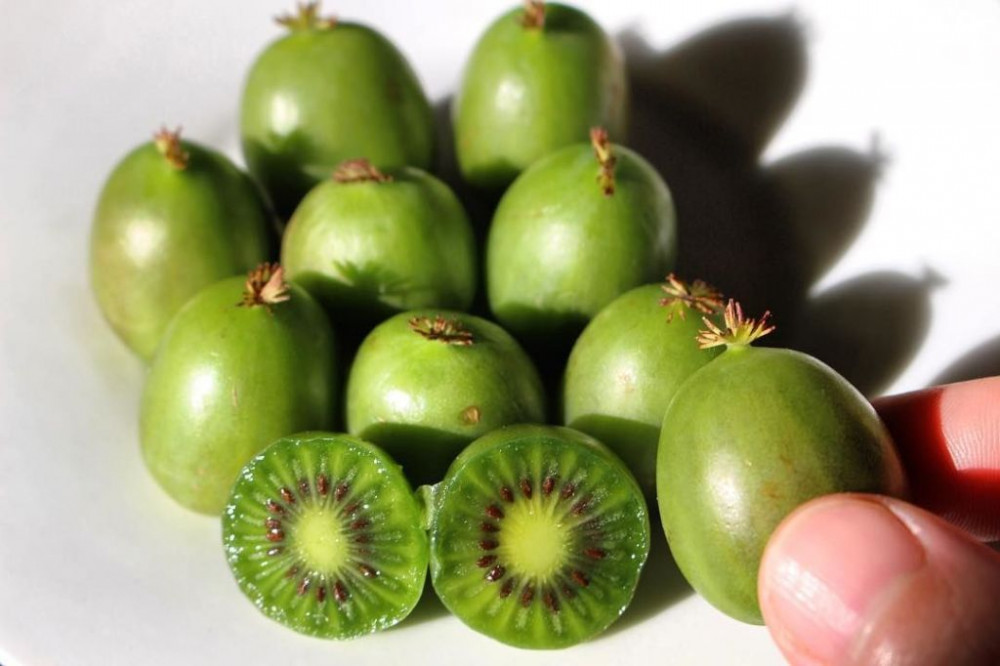 Source: Delish.com
Source: Delish.com
Hardy kiwis prefer well-drained soil and full sun exposure. They are relatively low-maintenance and can tolerate a wide range of soil conditions. While they are more cold-tolerant than fuzzy kiwis, they still require some protection in extremely cold climates.
Hardy kiwis are dioecious, meaning separate male and female plants are needed for pollination and fruit production. It is recommended to plant at least one male plant for every eight to ten female plants to ensure proper pollination.
#13. Indigo Rose Cherry Tomatoes
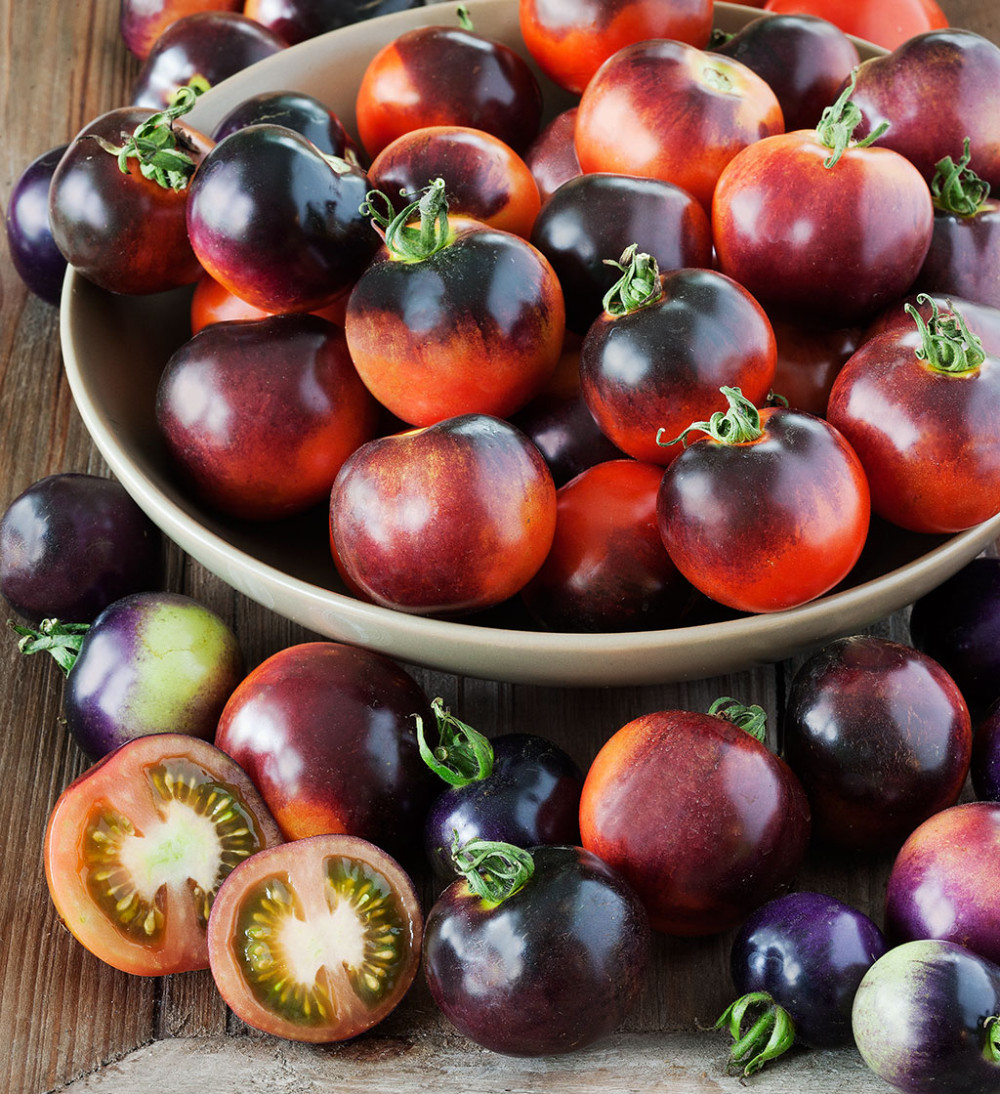 Source: Metchosin Farm
Source: Metchosin Farm
The unique pigment comes from high levels of anthocyanins, which are powerful antioxidants commonly found in blueberries and other dark-colored fruits. Aside from their distinctive appearance, Indigo Rose cherry tomatoes offer a deliciously sweet and tangy flavor.
They have a balanced and complex taste that sets them apart from traditional red cherry tomatoes. The small size of the fruit makes them perfect for snacking, salads, or garnishing various dishes.
#14. Kiwano Jelly Melons
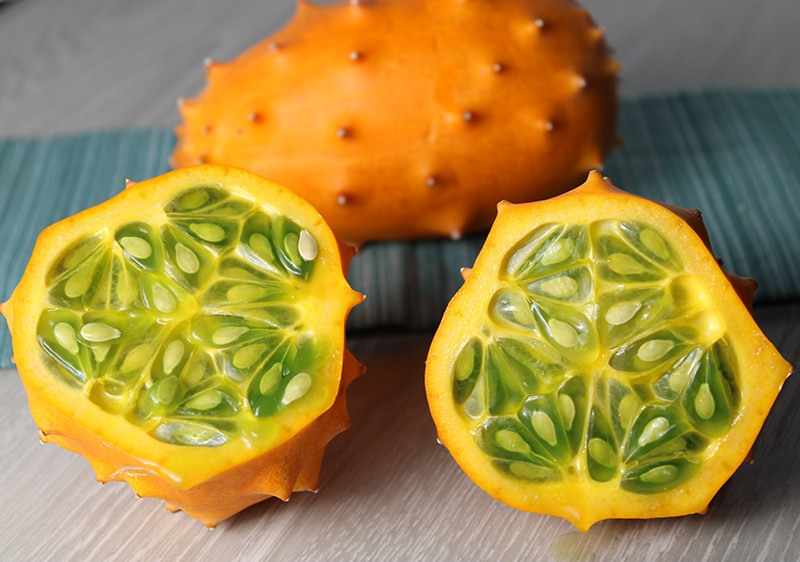 Source: Superfood Evolution
Source: Superfood Evolution
When growing Kiwano Jelly Melons in your garden, they thrive in warm climates and require well-drained soil and plenty of sunlight. The plants feature sprawling vines with distinctive, spiky fruits that ripen over time.
Despite their name, Kiwano Jelly Melons are not melons at all but belong to the cucumber and melon family. They have a unique flavor profile, combining hints of banana, cucumber, and lime, making them a delightful addition to both sweet and savory dishes.
#15. Yard Long Beans
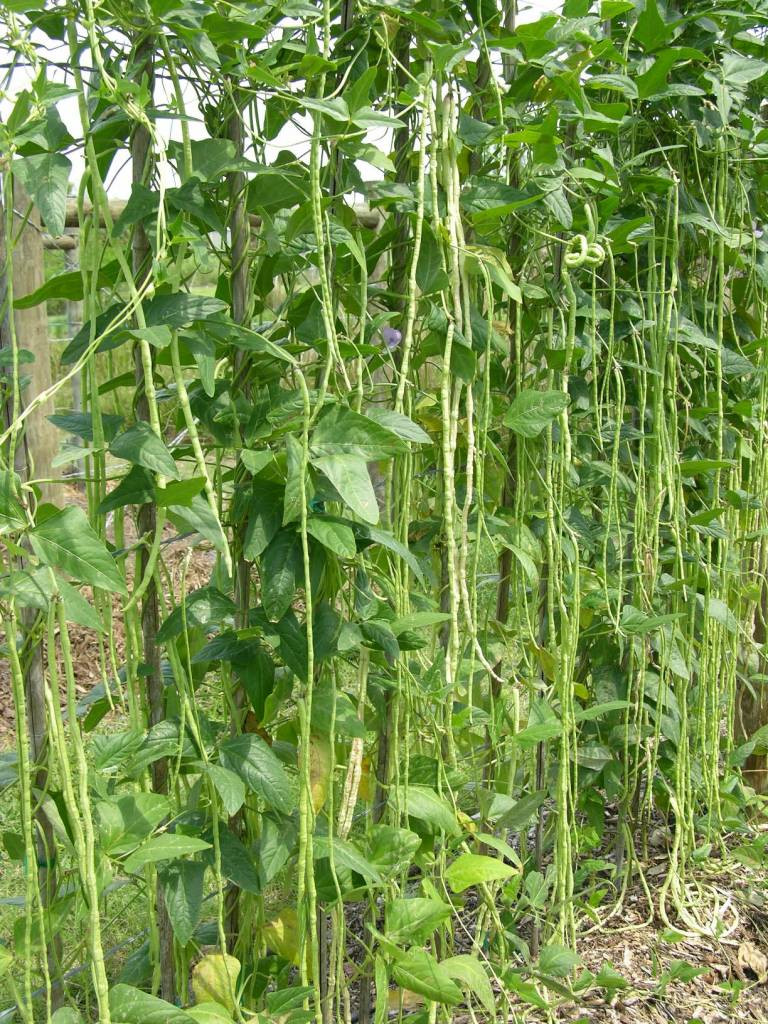 Source: ECHO Bookstore and Nursery
Source: ECHO Bookstore and Nursery
Yard Long beans are warm-season crops that thrive in well-drained soil and prefer a sunny location. They require a trellis or support structure to climb on, as their vines can grow quite tall. These beans are relatively easy to grow and can be harvested when they reach the desired length, typically around 12 to 18 inches.
Yard Long beans are highly nutritious, low in calories, and rich in fiber, vitamin C, vitamin A, and various minerals. They are a popular ingredient in Asian stir-fries, curries, and soups, and their mild flavor pairs well with a variety of spices and seasonings.
